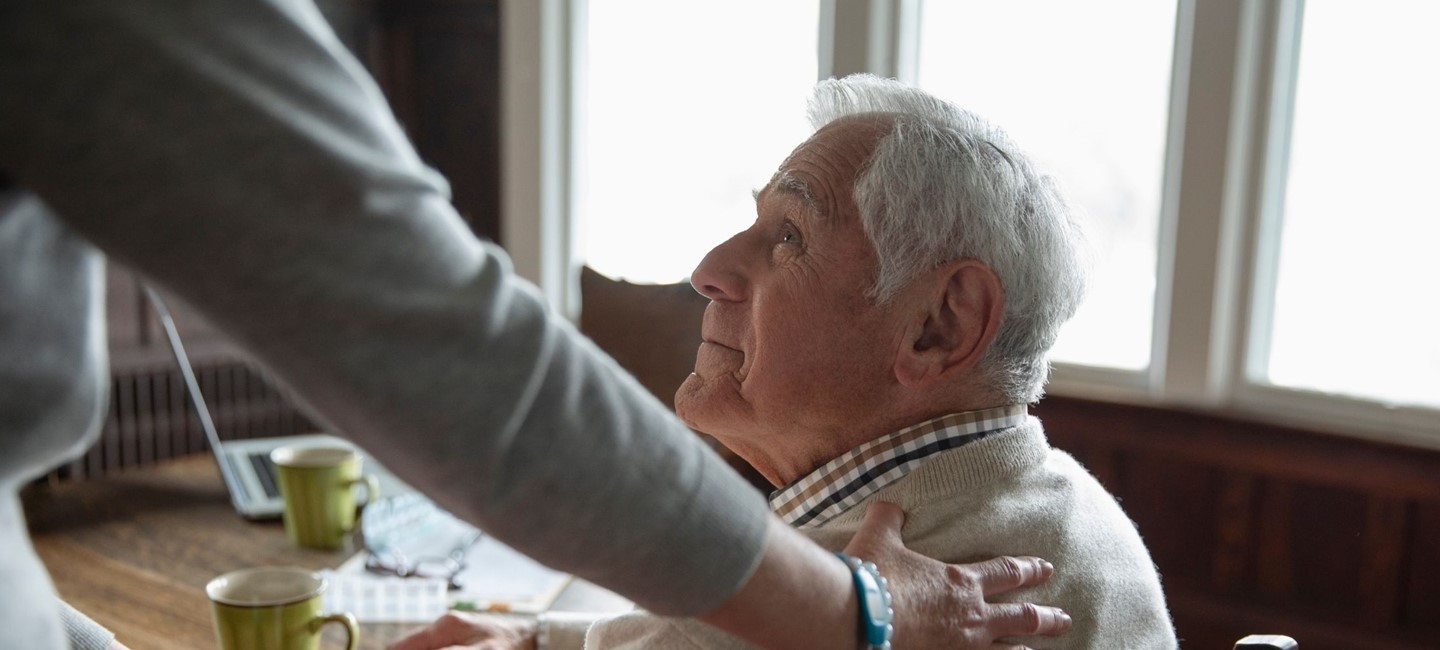
Assessing the impact of tardive dyskinesia in our patients
Abnormal involuntary movements caused by tardive dyskinesia (TD) can affect many aspects of patients’ lives.1 However, patients may find it difficult to articulate the impact of TD or be afraid that discussing it with their healthcare providers could lead to discontinuation of antipsychotic drugs.2 In a series of informative ‘Tips and Tricks’ videos, Dr Richard Jackson (University of Michigan, MI, USA) shares recommendations for assessing the impact of TD on daily life, including example discussions with real patients.
Assess the impact of TD at every patient visit
The movements caused by TD can fluctuate throughout the day and the impact of TD may also be affected by changes in patients’ personal circumstances.2 For this reason, Dr Jackson recommends discussing the symptoms and related burden of TD with patients at every visit.
The clinician-rated Abnormal Involuntary Movement Scale (AIMS)3 can be utilized to assess the severity of movements and how they have changed since the last visit. However, Dr Jackson notes that this does not capture the full impact of TD and it is critical to ask patients how their day-to-day activities are affected. He also highlights the benefits of gaining insights from other healthcare professionals involved in patient care, such as social workers, therapists, and vocational advocates.
Hear more from Dr Jackson
Assess the domains impacted by tardive dyskinesia
TD can affect usual day-to-day activities, including eating and self-care, and frequently leads to a reduction in quality of life.4,5 Many patients with TD experience lower productivity and fewer are in full-time employment than those without TD.4,5
Understanding the biopsychosocial impact of TD is critical to inform decisions about managing TD.2 Dr Jackson suggests clinicians focus on social, physical, vocational, psychological, and psychiatric domains, which will vary in importance depending on an individual’s lifestyle, abnormal movements, and perception.2
In some cases, TD may be associated with severe psychopathology and cognitive impairment.2,6 Dr Jackson highlights the need to consider a patient’s ability to recognize and verbalize day-to-day impact.
Watch Dr Jackson discuss the domains
Assess the importance of domains to each individual patient
When assessing the impact of TD, Dr Jackson notes that it is essential to consider the level of importance of each domain to individual patients. This will differ depending on each patient’s normal day-to-day activities, the location and severity of movements, and the impact perceived by the individual, as well as by others.2 Dr Jackson highlights that it is important to ask, observe, and be aware of the role these movements can play in a patient’s life. Factors influencing impact can vary over time, further highlighting the need to discuss this at each patient visit. Some patients may be unable to express their concerns, verbalize issues, and accurately describe TD impact.2 Therefore, Dr Jackson also recommends consulting caregivers, family members, and friends.
Hear more from Dr Jackson
Discuss the social impact of TD
The most common impacts of TD are social, including feelings of unwanted social attention, embarrassment, and social isolation.7 Over 40% of patients with TD feel their ability to socialize is affected and approximately 75% feel embarrassed or self-conscious.5
Dr Jackson notes that patients often deny social difficulties, making it important to explore using a variety of questions. For example, during a discussion with a patient in this video, he asks about her awareness of abnormal movements. She discusses how her repetitive leg movements make her conscious of appearing bored or rude, particularly at social occasions. The patient adds that she views TD as a physical manifestation of mental illness, which prevents her from explaining her abnormal movements to others. Another patient with TD and orofacial movements notes that wearing a mask during the COVID-19 pandemic was a “relief” for her as she could hide her mouth and not feel embarrassed in public.
Coping has a lot to do with how you feel about yourself. TD can make you feel terrible in front of everyone.
Learn more about the social impact of TD from real patients
Strassnig M, Rosenfeld A, Harvey PD. Tardive dyskinesia: motor system impairments, cognition, and everyday functioning. CNS Spectr 2018;23:370–377.
Jackson R, Brams MN, Citrome L, et al. Assessment of the impact of tardive dyskinesia in clinical practice: consensus panel recommendations. Neuropsychiatr Dis Treat 2021;7:1589–1597.
Munetz MR, Benjamin S. How to examine patients using the abnormal involuntary movement scale. Hosp Community Psychiatr 1988;39:1172–1177.
Caroff SN, Davis VG, Miller DD, et al. Treatment Outcomes of Patients With Tardive Dyskinesia and Chronic Schizophrenia. J Clin Psychiatry 2011;72:10.4088/JCP.09m05793yel.
Caroff SN, Yeomans K, Lenderking WR, et al. RE-KINECT: A Prospective Study of the Presence and Healthcare Burden of Tardive Dyskinesia in Clinical Practice Settings. J Clin Psychopharmacol 2020;40:259–268.
Eberhard J, Lindström E, Levander S. Tardive Dyskinesia and Antipsychotics: A 5-Year Longitudinal Study of Frequency, Correlates and Course. Int Clin Psychopharmacol 2006;21:35–42.
Farber R, Sparta D, Gauthier M, et al. Tardive dyskinesia: patient and caregiver perspectives on signs, symptoms, and impact. Paper presented at the Psych Congress Annual Meeting, New Orleans, LA, September 16–19, 2017.